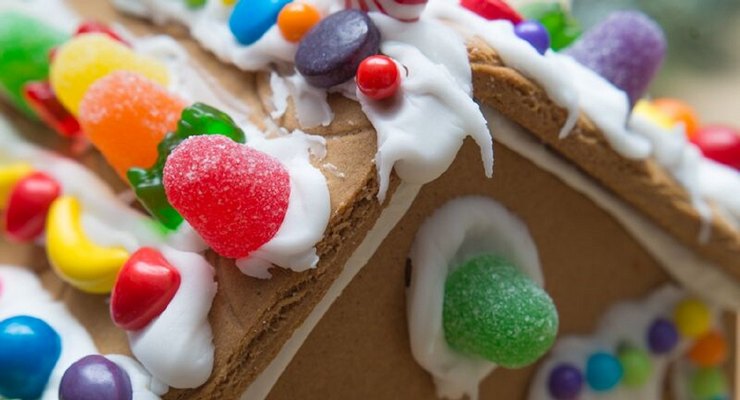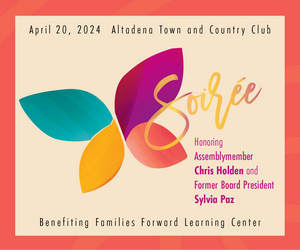
Saturday, December 12, is Gingerbread House Day, and since everyone is supposed to be staying home, we thought this would be a great opportunity to learn how to make a gingerbread house from scratch.
The entire family can join in on this activity, and since we all have more time to spend inside, why not try to make a gingerbread house from scratch? Check out this step-by-step guide, followed by some simple recipes.
To make your gingerbread house, you’ll need these ingredients, according to a recipe on SimplyRecipes.com:
- 6 cups (828 g) all purpose flour
- 1/2 teaspoon baking powder
- 4 teaspoons ground ginger
- 4 teaspoons ground cinnamon
- 1/2 teaspoon ground cloves or allspice
- 1/2 teaspoon salt
- 1 1/2 sticks (12 Tbsp) butter, softened
- 1 1/2 cups (284 g) packed light brown sugar
- 2 large eggs
- 1 cup dark molasses
- 1 Tbsp water
Whisk together the dry ingredients in a large bowl, set aside. Make the butter-sugar-egg-molasses mixture by beating the butter and brown sugar on medium speed in a stand mixer fitted with the paddle attachment, until fluffy and well blended. Beat in the eggs, molasses and water until well combined.
Combine the wet and dry ingredients and knead the dough: beat half of the flour mixture into the molasses mixture until well blended and smooth. Add in the remaining flour and continue to mix until well blended, and a soft cohesive dough forms. Turn the dough out onto a lightly floured work surface and knead by hand five or six times until the dough is smooth and combined. If the dough is too soft, add a little more flour.
Divide the dough in half, pat into disks, and wrap each half in plastic wrap. Refrigerate for at least two hours or overnight. You can make it up to three days ahead of time. Let the dough sit at room temperature for at least 10 minutes before rolling out.
To create and cut out pattern pieces, cut out pieces of stiff paper, like manila folder, or cardboard. Cardboard is almost as thick as the gingerbread house pieces will be, and you can create a house model easily using the pieces.
You can search Google for gif images of patterns you can use to design your gingerbread house, including the ideal dimensions.
You’ll need a roof pattern, side and chimney patterns, and front and back patterns.
To make the gingerbread house pieces, prepare oven and cookie sheets: preheat oven to 350°F, with the oven rack in the middle. Have several flat cookie sheets ready, preferably ones that you know will not warp in the oven heat.
Roll out the dough by spreading parchment paper on a large flat surface for rolling. Dust the paper lightly with flour.
Working with one portion of the dough at a time, use a rolling pin to roll out the dough to an even thickness of 1/4 inch. Add a little flour to the surface of the dough, and check for sticking as you roll it out.
If it sticks to either your rolling pin or the rolling surface, dust with more flour. If the rolled out dough is very soft, you may want to freeze it for an hour before cutting out the patterns.
To cut out shapes in dough with pattern pieces, rub a little flour over the surface of the dough. Place the pattern pieces on the dough, as many pattern pieces as will fit on the dough. Use a small sharp knife to cut out the pattern pieces from the dough, wiping the knife surface clean frequently.
Depending on how soft the dough is, you may need to use scissors to cut the parchment paper. You can cut out the patterns through the dough and parchment paper, placing the dough pieces with the paper directly on the cookie sheets.
If you are not using parchment paper, you may need to use a large metal spatula to transfer the dough pieces to a greased cookie sheet, spacing the pieces an inch apart from each other. If dough pieces stretch during the transfer process, push them back into shape.
You can cut out a door and windows at this point, or you can wait until after baking, soon after the pieces have come out of the oven while the cookies are still warm.
Bake your pieces in a 350°F oven until the edges are just beginning to darken, 11 to 15 minutes for the large pieces, 6 to 8 minutes for the small pieces. Rotate the cookie sheets halfway through the baking for more even browning. Remove the sheets to racks to cool, about 15 minutes.
While the pieces are still slightly warm, lay the pattern pieces over them and use a large straight chef’s knife to trim off any parts of the pieces that have through cooking spread beyond the pattern. Remove pieces to cool directly on racks to cool completely.
You’ll need to make royal icing, which is not only used for decorating, but is also the mortar that holds the gingerbread pieces together to form the house. The following ingredients should make enough icing for both the mortaring step and for decorating for one gingerbread house:
2 large egg whites
2 2/3 cup powdered sugar, divided
Whisk together until smooth the egg whites and 1 1/3 cups of the powdered sugar. If you are planning to eat your gingerbread house, and are concerned about the safety of raw eggs, you can cook the egg white powdered sugar mixture in a microwave for 30 to 40 seconds, or in a double boiler, until the mixture reaches a temperature of 160 degrees, but not higher than 175. You can also use pasteurized dried or liquid egg whites.
Using an electric mixer, beat the sugar-egg mixture on high speed until the icing holds stiff peaks. If it doesn’t form stiff peaks, add more powdered sugar. Place a dampened clean towel over the bowl of royal icing. Keep this towel over the icing to prevent it from drying out while you work with it.
When you are ready to mortar or decorate, fill a pastry bag with the icing. If you don’t have a pastry bag, you can make your own with a resealable plastic freezer bag, just cut off the tip (a small cut) of one of the corners of the bag. Plastic or metal piping tips are available in supermarkets which you can also use with a freezer bag, for more controlled piping.
Constructing the house is really where it helps to have more than two hands working on a house, and why making a gingerbread house is so much more fun with company than alone. If you are working on this alone, it may help to grab some canned goods from the pantry and use the cans to help prop up the pieces while the icing mortar is drying.
Pick a solid base for your gingerbread house, such as a flat cookie sheet, or a thick, sturdy piece of cardboard. If you want, line the base with aluminum foil or wax paper. Mortar the sides of the house with royal icing by piping a thick line of icing along a short end of one of the side pieces. Press the iced side piece against the edge of either the front or back pieces.
Hold in place for a few minutes until the icing is partially set. Repeat with the other side piece. Prop up with cans if necessary. Repeat with the other short edges of the side pieces and the remaining front/back piece.
Pipe icing along the seams, inside and outside of the house, to fill in any gaps and to add extra stability. Pipe icing along the edges where the house meets the base.
Let set for at least an hour before attempting to add the roof pieces.
If any of the gingerbread house pattern pieces breaks, as can happen easily when working with what are essentially cookies, most likely you can repair them by replacing the broken cookies.
Once the royal icing has dried enough so that the base structure is solid, you can go to work on the roof. Pipe icing all along the top edges of the structure, front and back and two sides. The roof pieces are rectangle shaped. Place the roof pieces so that the long ends of the rectangle are running along the top of the house.
Again, it helps if you have two people working together to place the roof pieces on the house at the same time so that they meet easily at the top center and extend out a little bit to form an overhang at each end.
Gently hold the roof pieces in place for a few minutes until they are set enough so they don’t slide off when you remove your hands.
Pipe the top seam of the house with extra icing. Let the house stand for at least an hour, and preferably 8 hours before decorating.
Mortar the chimney with royal icing. Although you may have cut your chimney out of a pattern, these small pieces likely have spread a bit through cooking, and you may have to use a chef’s knife to cut the pieces and adjust the angles of the pieces so they align better with the roof.
It’s easiest to assemble the chimney first upside down, separate from the house. Pipe the pieces together with royal icing and let set until stable. Then turn the chimney right-side-up and attach it to the roof using piped royal icing.
To decorate the gingerbread house, you may have to take a trip to the candy section of your local grocery store and choose whatever types of candy pleases you to add to the house.

















